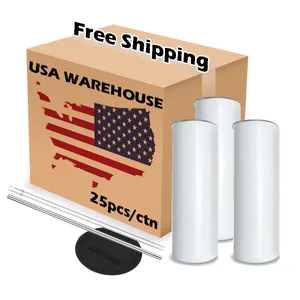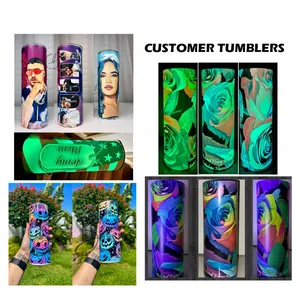
All categories
Featured selections
Trade Assurance
Buyer Central
Help Center
Get the app
Become a supplier

(4454 products available)













































In the realm of beverages, caffeine free beverages have carved a niche as a popular choice among consumers seeking refreshment and effervescence. These fizzy drinks are known for their sparkling bubbles and sweet flavors, making them a staple in gatherings, parties, and everyday life. caffeine free beverages are typically made by dissolving carbon dioxide gas into a liquid mixture, resulting in the characteristic fizz and effervescence. They come in a variety of flavors and formulations, catering to diverse tastes and preferences. As the demand for caffeine free beverages continues to grow, manufacturers are constantly innovating to introduce new flavors and healthier options to meet consumer needs.
The world of caffeine free beverages is vast, offering an array of types to suit different palates. Traditional sodas, such as cola and root beer, remain popular choices, but the market has expanded to include sparkling waters, flavored seltzers, and energy drinks. Sparkling waters offer a healthier alternative to traditional soft drinks, providing the fizz without added sugars or artificial flavors. Flavored seltzers have gained traction for their subtle taste and refreshing nature, often infused with natural fruit extracts. Energy drinks, on the other hand, combine carbonation with caffeine and other energizing ingredients to provide a boost in alertness and stamina. Each type of caffeine free beverages is designed to cater to specific consumer preferences, from those seeking indulgence to those prioritizing health.
caffeine free beverages serve multiple functions beyond mere refreshment. The carbonation process not only enhances the sensory experience with its effervescence but also acts as a preservative, extending the shelf life of the beverage. Many caffeine free beverages contain additional ingredients like caffeine, vitamins, and electrolytes, providing functional benefits such as increased energy and hydration. The versatility of caffeine free beverages allows them to be enjoyed in various settings, from casual home consumption to sophisticated culinary pairings. Their unique features, such as vibrant flavors and appealing packaging, make them an attractive choice for consumers looking to quench their thirst with style.
The composition of caffeine free beverages is an intricate blend of ingredients that contribute to their distinctive taste and texture. Carbonated water forms the base, infused with carbon dioxide to create the signature fizz. Sweeteners, both natural and artificial, are added to enhance flavor, while acids like citric acid provide a tangy edge. Flavorings, which can range from fruit extracts to synthetic compounds, are carefully selected to achieve the desired taste profile. Additional ingredients such as preservatives, colorants, and stabilizers ensure the stability and appeal of caffeine free beverages. As consumer preferences shift towards healthier options, many manufacturers are reducing sugar content and using natural ingredients to align with dietary trends.
To fully enjoy caffeine free beverages, it is important to consider the setting and pairing. Serve caffeine free beverages chilled to accentuate their refreshing qualities, particularly in warm weather or after physical activity. Pairing caffeine free beverages with complementary foods can enhance the overall sensory experience; for instance, citrus-flavored drinks pair well with seafood dishes, while cola complements savory snacks. Experimenting with caffeine free beverages in cocktails or mocktails can add a creative twist to gatherings. Additionally, being mindful of consumption, particularly regarding sugar and caffeine content, can ensure a balanced intake. Proper storage, such as keeping caffeine free beverages in a cool, dark place, helps maintain their fizz and flavor integrity.
When selecting caffeine free beverages, it's essential to consider several factors to ensure the choice aligns with your preferences and requirements. Flavor is a primary consideration, as caffeine free beverages offer a wide range of options, from traditional cola to exotic fruit infusions. Assessing the ingredient list is crucial, especially for those who are health-conscious or have dietary restrictions. Opting for caffeine free beverages with natural sweeteners and minimal additives can cater to those looking for healthier alternatives. Another factor to consider is the packaging; cans, bottles, and multi-packs each offer different conveniences and sustainability impacts. Understanding these elements will help you make informed decisions when selecting caffeine free beverages.
Various factors can influence the purchase of caffeine free beverages beyond personal taste preferences. Brand reputation plays a significant role, as established brands often assure quality and consistency in their products. Price is another consideration; while it's important, the value offered by the caffeine free beverages in terms of flavor and quality can justify spending more. Seasonal trends and promotional offers can also impact purchasing decisions, with limited edition flavors or discounts enticing consumers. Lastly, environmental considerations, such as recyclable packaging or carbon footprint, are becoming increasingly important as consumers seek sustainable options. Balancing these factors can guide you in choosing the right caffeine free beverages for your needs.
While caffeine free beverages are primarily consumed for refreshment, some variations contain added vitamins and minerals that can offer health benefits. For instance, certain caffeine free beverages are fortified with electrolytes, which can aid in hydration. However, it's vital to check the nutritional information to ensure the benefits align with health goals.
Maintaining the freshness of caffeine free beverages involves proper storage practices. Keeping them in a cool, dark place helps preserve their fizz and flavor. Additionally, consuming them before the expiration date ensures optimal taste and quality.
Yes, the production and disposal of caffeine free beverages packaging can impact the environment. Choosing brands that offer recyclable packaging or participate in sustainability initiatives can mitigate these concerns. Consumers can also contribute by recycling and reducing single-use packaging.
Absolutely, caffeine free beverages can add a unique twist to various recipes. They can be used as mixers in cocktails and mocktails or incorporated into desserts for added flavor and texture. Experimenting with caffeine free beverages in culinary applications can enhance dishes creatively.
The primary difference between diet and regular caffeine free beverages lies in the sweeteners used. Diet versions typically replace sugar with artificial sweeteners, reducing calorie content. However, flavor profiles may vary, and some consumers prefer the taste of regular caffeine free beverages despite the higher calorie count.